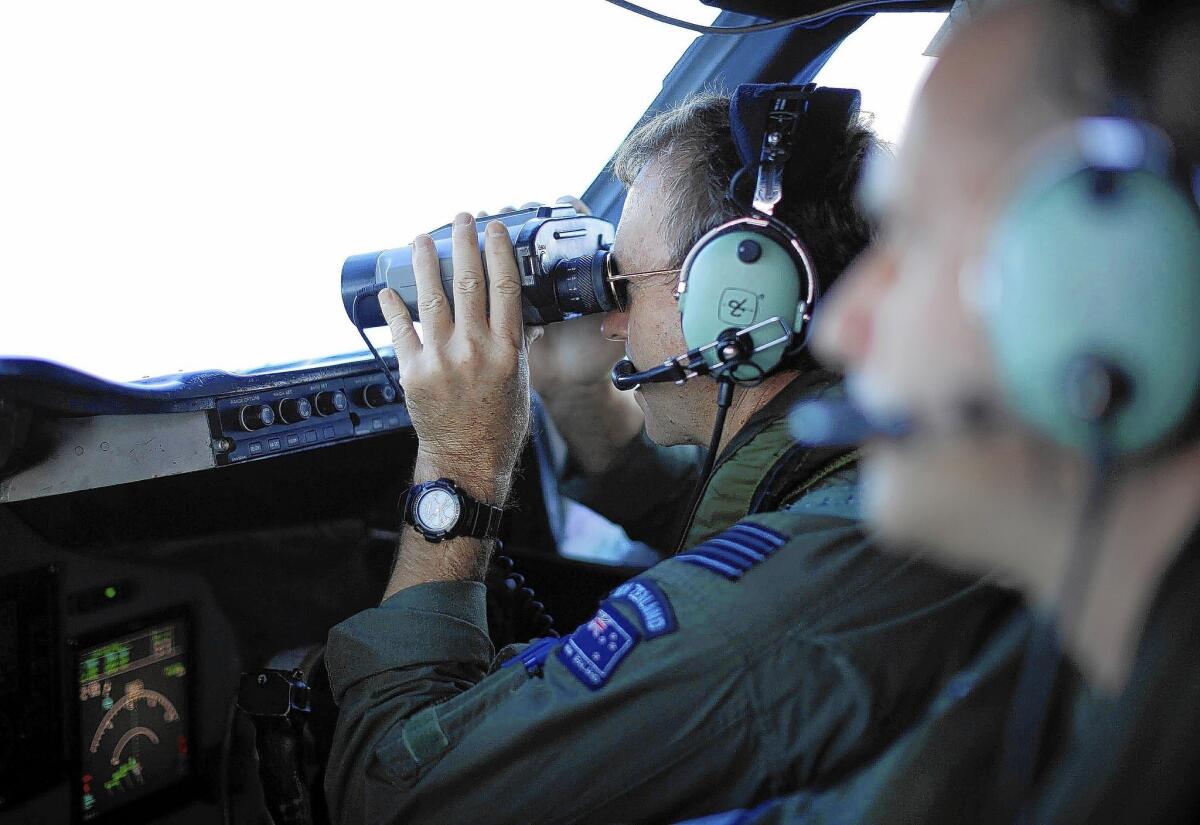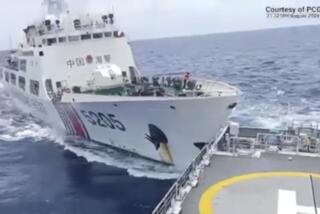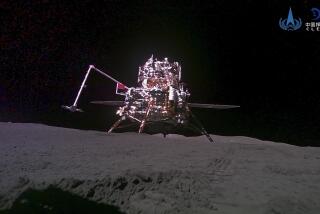Chinese aircraft spots 3 objects in Malaysia plane search zone

- Share via
BEIJING — Stepping up its role in the hunt for the elusive Malaysia Airlines flight 370, China reported Saturday that one of its Ilyushin IL-76 aircraft Saturday reported seeing “three suspicious objects” in the south Indian Ocean that could be wreckage from Malaysia Airlines Flight 370.
The official New China News Agency, which has a reporter on the search plane, described the objects as red, white and orange and wrote that a marker had been dropped at the location so that the debris could be retrieved by a ship for closer examination.
The announcement came as China assumed a greater role in the frustrating search for the Boeing 777, which carried 12 crew members and 227 passengers, 153 of whom were Chinese. Beijing has been publicly critical of Malaysia’s efforts to find the aircraft, which disappeared March 8 en route from Kuala Lumpur to Beijing.
The Chinese navy vessel Jinggangshan arrived Saturday at the new search location about 1,250 miles southwest of Perth, Australia. It carries two helicopters that will seek floating objects and traces of fuel on the ocean surface, the New China News Agency said. The Chinese maritime patrol ship Haixun 01 reached the new search area Friday night.
Four other Chinese ships also are engaged in the search, the state news agency reported Saturday. Ten aircraft from Australia, Japan, the United States, South Korea and Malaysia flew search missions from Perth, according to the Australian Maritime Safety Authority.
“If Chinese can be more involved in the investigation, as an active participant in the investigation and not just as an observer, that would be a good thing. At least, it could enhance communications with the Malaysian government,” said Peng Zongchao, a specialist in crisis management at Beijing’s Tsinghua University.
Beijing has been irked by Malaysia’s release of often-contradictory information about the flight path, and the control of satellite intelligence by the U.S., Britain, France and Australia.
That isolation has proved embarrassing to a Chinese government that has pledged to expand its naval presence, particularly in the South China Sea.
“This underscores that America’s military presence in the region is large and second to none,” said Ian Storey, a senior fellow at the Institute of Southeast Asian Studies in Singapore. “The Chinese are working on catching up .... they have made significant strides but they are still a long way behind the U.S.”
Malaysia is one of the Southeast Asian countries disputing Beijing’s territorial claims in the South China Sea, and its military has had better relations with the United States than with China, Storey added.
The Haixun, the first vessel to arrive at the new search location, belongs to the Maritime Safety Administration, one of the Chinese civilian agencies that has been accused of operating as paramilitary pressing China’s claims in the South China Sea.
At least five aircraft, along with several ships and satellites, have reported sighting floating objects in the last two days. One of the items was said to be bluish-gray and rectangular. None has been verified as part of the missing plane.
The multiple sightings came after Australian authorities coordinating the search shifted efforts 680 miles northeast, after satellite data suggested the Boeing 777 had run out of fuel sooner than originally believed, making it likely to have crashed closer to Australia’s western shore.
The new area’s relative proximity and smaller expanse have raised hope that vestiges of the jetliner will be found and efforts to retrieve its voice and data recorders can begin. Transponders on those recorders have a battery life of just 30 days.
Although closer to shore, the water may be deeper in the new search area and the ocean floor’s topography may be more complex than more distant sites, said David Gallo, who managed search expeditions for Air France Flight 447, which crashed into the Atlantic Ocean off Brazil in 2009.
Broken Ridge, an underwater cliff, plunges to a depth of about 15,000 feet in the new search zone, about 3,000 feet deeper than where the Air France wreckage was found, Gallo said.
“This new region could be horrific to search,” said Gallo, special operations director at the Woods Hole Oceanographic Institution in Massachusetts. “Underwater sonar will be bouncing off boulders the size of houses.”
The U.S. Navy has deployed a system called the Towed Pinger Locator 25 that hovers about 1,000 feet off the sea floor, in the hope of detecting an acoustic pulse from the aircraft’s voice and data recorders.
The Navy said its system can hear a pinger at a “maximum depth of 20,000 feet anywhere in the world.”
Times staff writer W.J. Hennigan contributed to this report from Los Angeles.
More to Read
Sign up for Essential California
The most important California stories and recommendations in your inbox every morning.
You may occasionally receive promotional content from the Los Angeles Times.









